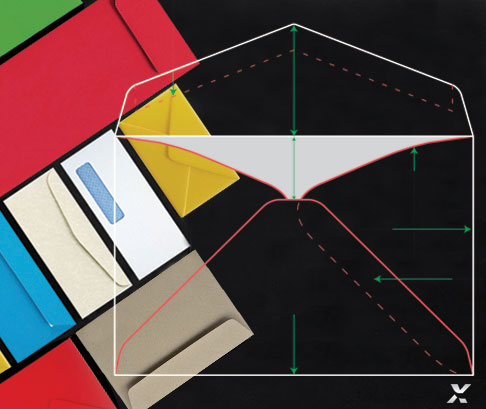Envelopes may seem like simple items, but their design is more intricate than meets the eye. From the familiar rectangle that holds your letters to the various flaps and folds, envelopes serve as protective vessels for your mail. Let’s break down the anatomy of an envelope, exploring its components and functions to gain a deeper understanding of this essential stationery item.
Flaps
At the heart of every envelope are its flaps—those foldable pieces of paper that seal its contents. Envelopes typically have two main types of flaps: the closure flap and the side flaps. The closure flap is the larger flap that folds down over the opening of the envelope, sealing it shut. Side flaps, on the other hand, are the smaller flaps on either side of the envelope that fold inward to secure the closure flap.
Sealing Method
Envelopes can be sealed in various ways, depending on their intended use and design. The most common sealing methods include moisture-activated adhesives, peel-and-seal strips like SupremeX’s Peel It! Seal It! closure, and self-sealing closures. Moisture-activated adhesives require licking or wetting to activate the adhesive, while peel-and-seal strips feature a removable strip that exposes an adhesive surface for sealing. Self-sealing closures, also known as pressure-sensitive adhesives, require no additional moisture or stripping and seal when pressure is applied to the flap.
Window
Many envelopes feature a transparent window on the front that allows for the visibility of the address printed on the enclosed document. These windows are typically made of clear plastic or glassine and are strategically positioned to align with the recipient’s address. Window envelopes are commonly used for business correspondence, invoices, and billing statements, providing a convenient way to display address information without the need for additional labeling or addressing.
Construction
Envelopes are typically constructed from a single sheet of paper or cardstock that is folded and sealed to create a pocket for holding documents. The paper used for envelopes can vary in weight, texture, and color, depending on the desired aesthetic and functional properties. Some envelopes may also feature additional elements such as security tinting, reinforced seams, or tear-resistant materials to enhance durability and security.
Size and Format
Envelopes come in a variety of sizes and formats to accommodate different types of mail and documents. Common envelope sizes include standard business envelopes (No. 10), which are ideal for letters and business correspondence, as well as larger sizes such as catalog envelopes and manila/kraft envelopes, which are suitable for mailing bulky or oversized items. Envelope formats can also vary, ranging from traditional square-flap envelopes to more contemporary styles with diagonal or pointed flaps.
Security Features
In addition to sealing methods and construction materials, envelopes may also include various security features to protect their contents during transit. Security features such as tamper-evident seals, security tinting, and reinforced seams help prevent unauthorized access and tampering, ensuring that sensitive documents and valuables remain secure until they reach their intended recipient.
The humble envelope may seem like a straightforward item, but its design and construction are anything but simple. From its flaps and sealing methods to its size, format, and security features, every aspect of an envelope is carefully considered to ensure its functionality, durability, and security. By understanding the anatomy of an envelope and its components and functions, we gain a deeper appreciation for this essential stationery item and its role in protecting and delivering our mail.


